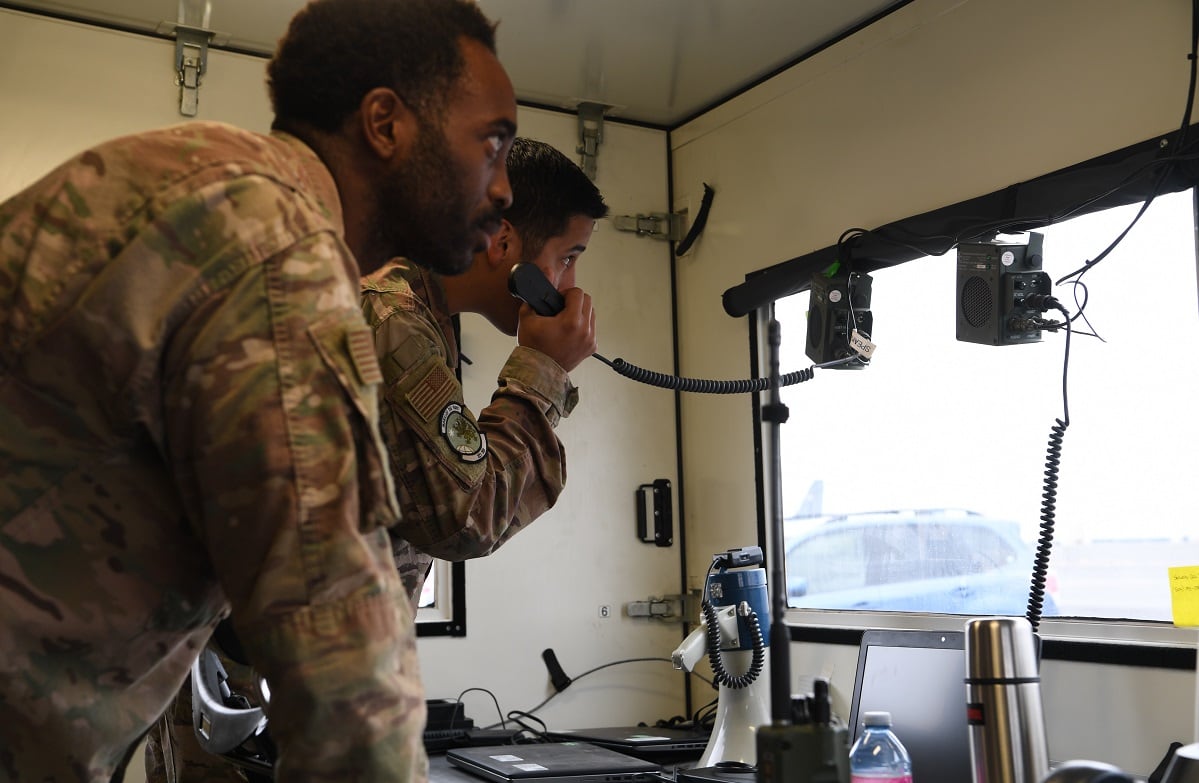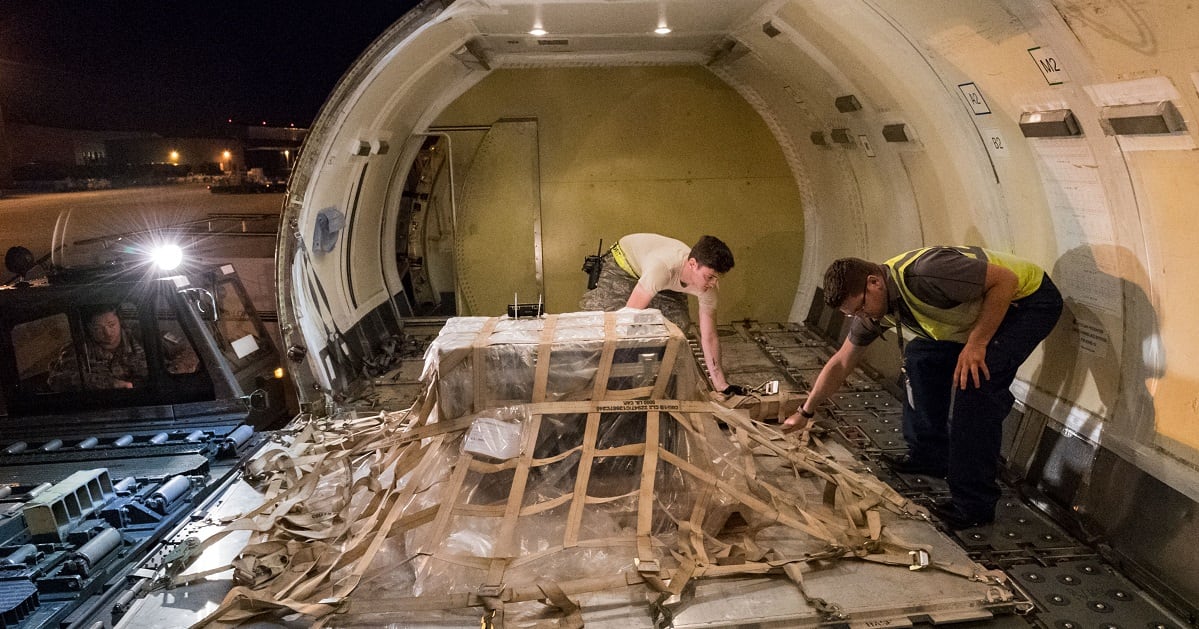Operating in austere conditions, beyond well-defended bases, is likely in the event of a conflict with a near-peer adversary like Russia or China, according to Air Force leaders.
As a result, the service has increasingly focused on its ability to operate in degraded combat environments the past several years. The biennial Mobility Guardian exercise now underway in Washington state is testing mobility aircraft’s readiness to conduct their missions in such contested environments.
For Air Mobility Command’s largest readiness exercise, more than 4,000 U.S. and troops, including members of the Air Force, Army, Navy and Marine Corps are now at Fairchild Air Force Base in Spokane and other Western locations to train for airlift, air refueling, aeromedical evacuation and global air mobility support.
The exercise is also designed to sharpen participants’ abilities to conduct forcible entry, airfield seizure, strategic deterrence and humanitarian relief operations, according to the service.
As just one example of the kind of training going on, airmen from the 92nd Logistics Readiness Squadron employed a Fuels Operational Readiness Capability Equipment system, marking the first time the mobile fuel bladders have been used stateside in an uncontested environment.
“We use the FORCE to help sustain bare bases and allow for fuel distribution anywhere around the world at a moment’s notice,” said Master Sgt. Daniel Rey, 92nd LRS fuels information service center section chief. “The bladder can hold up to 50,000 gallons of fuel, which can help service a wide range of friendly aircraft.”
Meanwhile, at Moses Lake, about 100 miles southwest of Fairchild, airmen from the 621st Contingency Response Wing provided tactical operations center support during a first-of-its-kind Ability to Survive and Operate scenario Sept. 16, according to an Air Force news release.

In the scenario, aircrew from Australia, Canada, New Zealand and the United Kingdom aboard a KC-135 Stratotanker reported chemical contamination while performing an aeromedical evacuation.
The Contingency Response Team at the TOC coordinated ground decontamination support and received the aircraft.
“We provided command and control coverage, access to ramp space and a location to set up a decontamination line for aircrew flight equipment,” said Master Sgt. Jeremiah Ibarra, 321st CRT chief, in the release. “From the tactical operations center we coordinated with the air operations center to get AFE the equipment and supplies they needed.”
CRTs deploy to locations that don’t have established air support, and deploy forces that can open and operate an airfield.
“We set up airfields and ramps, communicate aircraft landing, parking, maintenance, refueling and fleet service,” Ibarra said. “To my knowledge this is the biggest CRT operation that has ever happened.”
The CRT is training alongside the 515th Air Mobility Operations Wing, Hickam Air Force Base, Hawaii, and the 521st AMOW, Ramstein Air Base, Germany, at Moses Lake to demonstrate the capability to operate as an integrated team.
“To have the CRT embedded with us here isn’t something that we do often, but it has been super beneficial.” said Capt. Jennifer Krutka, officer in-charge of Moses Lake, in the news release. “It has truly been a team effort. We have port airmen learning how to do maintenance and maintenance personnel learning port duties. One of Gen. [Maryanne] Miller’s initiatives was to be more versatile airman, and we are doing that here.”
Miller, the head of Air Mobility Command, stressed the significance of the exercise as it related to the 2018 National Defense Strategy at the Air Force Association’s Air, Space Cyber conference last week.
“It is imperative that we outpace our adversaries and best position the mobility air forces to defeat the threats of tomorrow,” Miller said.
She also said the exercises align with the command’s evolution over the past year into a “warfighting component command” that streamlines the mobility of forces through direct coordinating authority.

“The world has changed and through our transformation efforts, AMC has adapted to meet the growing requirements and accelerated global demands,” Miller said. “As a more agile organization, we have increased our ability to fully leverage the full complement of our mobility resources.”
The Air Force says another element of the exercise is fostering relationships with allies. There are nearly 30 international partners participating in the exercise this year.
“The future of warfare will be increasingly joint,” Lt. Col. Joseph Monaco, director of Mobility Guardian, said in an Air Force news release Sept. 9. “This exercise is an unparalleled opportunity to develop joint-minded airmen who can integrate seamlessly with soldiers, sailors and Marines to compete and if necessary, win amidst great power adversaries.”
The exercise, which kicked off Sept. 8 and concludes Sept. 28, employs aircraft including the KC-10 Extender, KC-135 Stratotanker, C-5 Super Galaxy, C-17 Globemaster III and C-130H/J Hercules and Super Hercules. Of the 4,000 service members, 2,500 are from AMC.
The exercise is slated every two years and was first held in 2017 at Joint Base Lewis-McChord in Washington.





